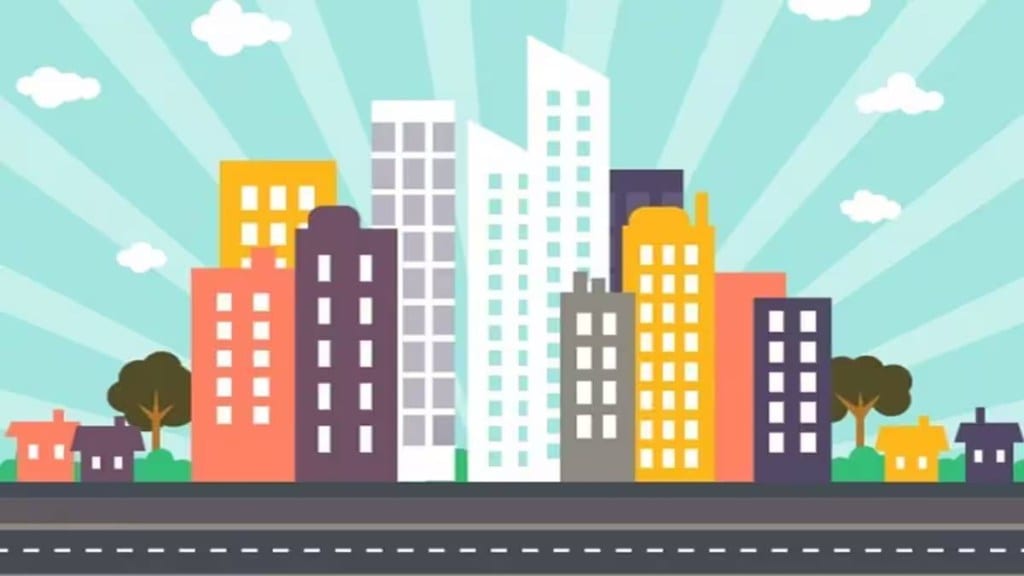ABB India managing director Sanjeev Sharma said at a recent media event that about 70% of the buildings that would exist in 2030 were yet to be built, presenting huge opportunities in retail and commercial buildings to employ automation and sensorisation, which would result in increased energy efficiency.
Top property developers and real estate investment trusts (REITs) seem to agree as they have bet big on energy efficient buildings. From Bengaluru based Prestige group to PE investor Blackstone to Mindspace REIT, all of them are building millions of square feet of green buildings which are not only high on technology but are also focused on ESG (environmental, social and governance).
According to an estimate by the Indian Green Building Council (IGBC), over 7 billion sq ft of green buildings are coming up.
For instance, Bengaluru based Prestige Group is building over 100 projects measuring over 175 million square feet across commercial and residential buildings that integrates its clients with new age technology with strong ESG focus, Juggy Marwaha, CEO, Prestige Office Ventures, said.
Typically the expenditure on these varies between Rs 100-120 per sq ft on the saleable area for office developments. For residential development, it’s Rs 20-60 per sq ft based on the category of developments, Marwaha said.
“At Prestige, we have implemented automation across our diverse asset classes keeping in mind the feasibility and stakeholder friendliness. We have upgraded and configured our existing developments to integrate automation at the building management, facilities and engineering level (mechanical/electrical/plumbing),” Marwah said.
Blackstone-owned Nucleus Office Parks is also focusing on energy efficient structures and over 86% of its operating assets achieved Platinum certification, said its chief executive Quaiser Parvez, adding that they are among the largest holders of LEED EBOM certified portfolios, and the emphasis on wellness is a fundamental aspect of our operational approach.
LEED (Leadership in Energy and Environmental Design) is the most widely used green building rating system in the world and LEED for Existing Buildings: Operations & Maintenance (LEED-EBOM), aids building managers in greening their operations.
“Over the next five years, we want to pivot to efficiency consumers from energy consumers. Our approach includes incorporating advanced solar energy utilisation, and automated energy management solutions for our operating assets,” he said.
Minspace Business Parks REIT has a green building footprint of 25.1 million square feet, encompassing 54 energy efficient buildings. Each building employs state-of-the-art technologies, ensuring efficient energy consumption LEED/IGBC certifications for 97% of the buildings, underscoring its dedication to environmental stewardship. The rest of the buildings are under the process of final green certification.
Vinod Rohira, chief executive at Mindspace Business Parks REIT said:”We regularly conduct detailed energy audits for the existing buildings to identify potential conservation measures and overall improvements. One of our ESG targets is to attain a 100% green building footprint at the earliest and to achieve this we are exploring various energy efficient technologies, ” Rohira said, adding that energy efficient air conditioning systems, energy efficient lighting and high-performance building envelopes, renewable energy interventions are some of them.
Mindspace is also putting in place infrastructure for real-time energy monitoring and data analytics to track energy usage, identify inefficiencies, and optimise building operations for better energy performance.
Santhosh Kumar , vice chairman at Anarock Group, said that despite increasing awareness, most of the demand for sustainable buildings currently comes from consumers of commercial real estate , “largely because a vast number of MNCs now insist on the kinds of sustainability features that only Grade A office buildings put on the table,” he said.
The Indian Green Building Council (IGBC) started with a modest 20,000 sq ft green built-up area in the country in 2003. “By February 2023, IGBC reports that there were more than 2.1 million green buildings projects coming up with a footprint of over 7 billion sq ft area,” he said. At least 3,260 of these green building projects are certified and already fully-functional in India.
The problem is that the price differences between certified green homes and non-green ones is significant for budget-conscious first-time homebuyers, he said, adding that green homes are at least 10-15% costlier, depending on various facilities and factors. The fact that in the long run, a green home results in 30-40% savings on energy and water bills does not cut much ice.
